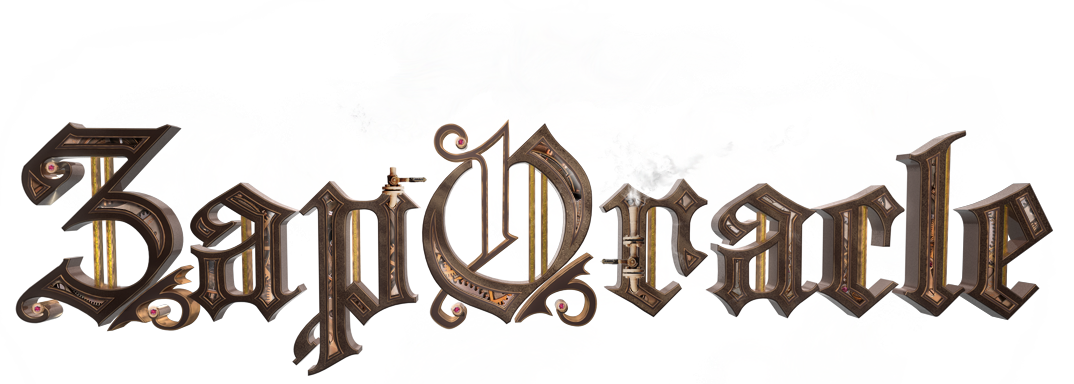“Murmur at nothing: if our ills are reparable, it is ungrateful; if remediless, it is vain.” — Shakespeare
“Every man supposes himself not to be fully understood or appreciated.”
— Ralph Waldo Emerson
“What poison is to food, self-pity is to life.” — Oliver C. Wilson
“Self-pity is a death that has no resurrection, a sinkhole from which no rescuing hand can drag you because you have chosen to sink.”
— Elizabeth Elliot
“A man’s as miserable as he thinks he is.”
— Marcus Annaeus Seneca, ca. 54 BC– ca. 39 AD, a Roman rhetorician and writer
“Do not weep; do not wax indignant. Understand.”
— Baruch Spinoza
“To understand the world, one must not be worrying about one’s self.” — Albert Einstein
“Sometimes I go about in pity for myself, and all the while a great wind is bearing me across the sky.”
— Ojibwa Saying
Self-pity is one of the cheapest, most addictive, and most debilitating drugs available in the neuropharmacopeia of negative emotions. You don’t even have to walk down to the corner store; you can start free-basing self-pity while still under the covers. Self-pity is like a self-replenishing box of glazed donuts conveniently placed by your side. When you drive, it’s on the seat next to you; when you go to bed, it jumps into bed with you. Without even realizing it, you find your hand reaching under the cardboard and cellophane lid of your donut box, and before you know it, there is a heavy mass of glazed donut paste decomposing in your stomach. The essential problem with glazed donuts is that we eat them to feel better, but they make us feel worse. Self-pity is one of the most potent deadly comforts, the things we reach for when we feel bad that seduce us into feeling much worse.
We become vulnerable to self-pity when our pride is wounded, when our inner child is upset, and when we focus on our neediness rather than compassion for others. If we focus on serving the world, we find ourselves in a golden age of opportunities. If we focus on how the world serves us, however, we see the world as mother’s breast and find ourselves in an age of sorrows, frustrations, and irritations as we discover a vast, diabolical conspiracy to keep us from suckling. Self-pity is like an obese man eating pizza in front of the TV being irritated by the irrelevant sight of a starving child in Ethiopia while the world ignores the staggering injustice that slender, young hotties don’t love him for who he really is.
“A tear dries quickly when it is shed for troubles of others.”
— Marcus T. Cicero, ca. 106-43 BC, Roman orator and politician
Two essential attributes self-pity depends on are internal considering and upward comparison. When in self-pity mode, we focus on internal consideration — what we are feeling and how we are put upon, victimized, and unfairly treated by life. While we focus on internal considering, we tend to be blind, deaf, dumb, and indifferent to what others are feeling.
“Never allow your own sorrow to absorb you, but seek out another to console, and you will find consolation.”
— J. C. Macaulay
Self-pity is prone to upward comparison; it would like us to compare ourselves to others who seem better off. Self-pity is violently allergic to downward comparison, to the comparison of our situation to that of others who are worse off. The image of the starving child in Ethiopia is a pity-party pooper, as unwelcome as the parental knock on the door in the midst of masturbation. So, if you find yourself in self-pity mode and want to intervene, external considering and downward comparison will be like a bucket of water on the head of the Wicked Witch of the West.
On the other hand, we should not have contempt for ourselves or others who are afflicted with self-pity. Also, it is sometimes hard to discern where authentic suffering leaves off and self-pity begins. It is crucial to have compassion for yourself when you must endure galling hardships and mistreatment from others. There are many gray cases where self-compassion for authentic suffering starts to phase into self-pity. In other cases, you know self-pity is present, but there are also elements of self-compassion and authentic suffering as well. I have found two elements that aid in discerning self-compassion from self-pity. When in self-pity mode, we want others to come to the rescue, show that they feel our pain, and make us feel better. We are in a state where we feel dependent on outside rescue. The other sign that we are not in self-compassion and have descended into debilitating self-pity is when we become passive, lethargic, and unwilling to take available positive steps that could improve the situation. If you have genuine compassion for someone suffering, you will be willing to take positive steps to help. If you have genuine compassion for yourself, you will be willing to take positive steps for yourself and won’t wait for outside help when there are things you can do for yourself. For example, my morale always improves if my home is reasonably clean and orderly. If I’m feeling bad, unless there’s some overwhelming trauma or grief, I am still able to clean up my home. I am in self-compassion mode if I’m willing to take at least that simple step to help myself. If I’m not willing to take this positive step, then I am probably in self-pity mode and don’t want anything that will interfere with bringing on negative emotions.
So here’s my intervention plan for self-pity:
Shift from internal considering to external considering, shift from upward comparison to downward comparison, and list all the things you have to be grateful for. For example, consider what a hardship it would be to have a missing hand or two. If you have working five-fingered hands, that is a blessing.
Take positive actions to help your life.
Do not wait for outside rescue. If you care about yourself and your suffering, get up and take positive action.
Clean your house, pay down your credit card by two dollars if that’s all you can spare, do a neglected task, and do any small services for yourself that you would do for another person you cared about who was suffering.
Many others have recognized positive action as the antidote for self-pity:
“The secret of being miserable is to have leisure to bother about whether you are happy or not. The cure for it is occupation.” — George Bernard Shaw
“The cure for grief is motion.” — Elbert Hubbard
“When you find yourself overpowered, as it were, by melancholy, the best way is to go out and do something.” — John Keble
“I got the blues thinking about the future, so I left off and made some marmalade. It’s amazing how it cheers one up to shred oranges or scrub the floor.”
— D.H. Lawrence
I think you get the message about action as an antidote. I’ve got a few more suggestions before I close by recommending a brand of magic that can transform self-pity. The opposite of self-pity mode is Warrior mode. I strongly recommend reading some of the documents in the Warrior Stance section of this site. You could start with The Way of the Warrior. To learn more about how afflictive thoughts and feelings work psychologically and neurologically, and for some practical techniques to deal with them, see A Guide to the Perplexed Interdimensional Traveler. Many useful ideas and techniques can be found in Awakening from Depression
Finally, self-pity depends on negative interpretations. Another antidote is to practice what I call “interpretive magic.” For those who have time to read more, here is a very brief lesson on interpretive magic:
It is a common and limiting assumption that only one interpretation of an event or situation is correct. But the phenomenal world is rarely, if ever, so cut and dried. Recognize that in many cases, interpretation is a choice and not a single correct answer. For example, I recently had to send in my laptop, my only computer, for repairs. Due to some improbable mishaps, I had to send it in two more times, and the problem that should have taken days to fix has taken weeks. A reasonable and plausible interpretation is that this was a meaningless inconvenience due to mechanical forces beyond my control. An alternate interpretation is that the improbable mishaps were “meant to happen” and that I needed space to open up from a long period of laborious editing I was doing. Which of these interpretations is most likely? The first explanation passes that classic test of logic, Occam’s Razor, would have us prefer the simplest, least fancy explanation that accounts for all the facts. By contrast, the “meant to happen” point of view is often used in ways that seem glib and reeking with sentimental rationalization. Mysterious forces, or the principle of synchronicity, would have to be employed to justify this interpretation, and that means that this hypothesis is significantly fancier than the first. But in some cases of interpretation, likelihood and strict rules of logic are not the most useful aspects when choosing among possible interpretations.
In the case of the improbably prolonged laptop repair, both interpretations are potentially valid. Instead of deciding which of these interpretations was “right,” I recognized that choosing the interpretation I intuitively preferred was much more helpful. When I tried the first interpretation — the mechanical forces beyond my control interpretation — I found that it did nothing for me except increase stress and a sense of helpless frustration. I could feel my blood pressure rising and my jaw clenching. I realized that this interpretation adversely affected my body and psyche. The second interpretation provided a sense of space opening up, a sense of serendipity and unexpected possibilities. By choosing the second interpretation, I entered a different timeline than if I had chosen the first interpretation. I decided to read a couple of books on a subject that I probably wouldn’t have found time to read if I had access to my laptop. Some parallel realizations of my own accompanied these two books, leading to a life-changing breakthrough in an area of my life that I had struggled with for decades. In this case, choosing the interpretation that felt more empowering and life-affirming seemed to lead to a much more positive outcome.
The act of consciously choosing an interpretation of an event or situation is an example of what I call interpretive magic. The creative interpretation of life elements is not merely a matter of passive perception. Once you realize you have the right to interpret and reinterpret given elements, you usually need to act on the new interpretation to establish the timeline it opens up.
The opposite of interpretative magic is fundamentalism or orthodoxy, where asserting the right to interpret or reinterpret would be regarded as heresy.
I have found that many people who are not overt fundamentalists fall for a similar delusion I call the “museum curator fallacy.” Such people view everything, especially things found in nature, as sacred and never to be touched or interfered with. Such museum curator types often have a hands-off attitude toward people, especially from an exotic culture, as if they were a Star Trek away team member with an overly orthodox interpretation of the Prime Directive. Intruding their will on anything seems to them like a sacrilege and an interference with a divine plan. They don’t recognize they are human beings, the most interventionist organisms we know of, an attribute that is as much a part of nature as everything else.
Arnold Toynbee, the great historian who studied the lifecycle of civilizations, concluded that a civilization was in decline when it no longer had a ruling mythology. Your personal mythology is the aggregation of your significant choices of interpretation. Keep your interpretive choices creative and life-affirming so that you have a healthy personal mythology. If you don’t have a positive ruling mythology, your life will decline.
Consider the occurrence of this card an auspicious time to forgo self-pity and boldly and creatively apply interpretative magic.
For a more empowered stance learn about the way of the warrior:
The Way of the Warrior
Warrior Quotes
and other writings in the Warrior Stance category of the writing section
 ZapOracle.com home to the free 720-card Zap Oracle
ZapOracle.com home to the free 720-card Zap Oracle






